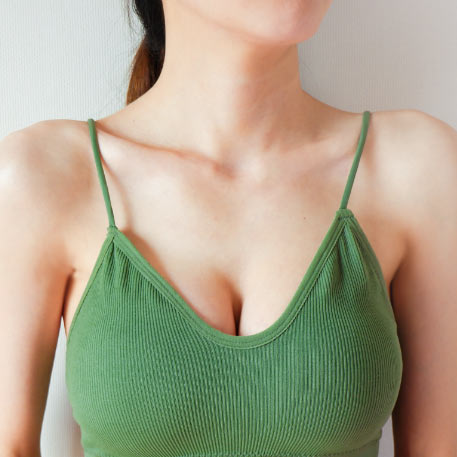What is Breast Reduction?
Breast Reduction is a simple and very safe cosmetic surgery, performed under general anesthesia, aims to remove excess skin, breast fat, and glandular tissue, to achieve a breast size more in proportion with your body and to alleviate the discomfort associated with excessively large breasts (macromastia).
Although breast reduction is often performed to address medical issues, ladies who do not have the symptoms of (macromastia) and other medical problems, but are unhappy with the size of their breasts can still pursue breast reduction as an aesthetic procedure.

Candidates for Breast Reduction
Breast Reduction is the best solution to get the healthy breasts and the great body figure, yet, before going through it, there are few conditions you’ve got to have first, which are;
- Those who are healthy, and free from specific diseases that prevent them from undergoing breast reduction surgery.
- Thoses who have macromastia in the breasts.
- Those with cysts or glandular tissue.
- Those with skin irritation beneath the breast crease.
- Those with back, neck and shoulder pain caused by the breasts’ weight.
- Those with the discomfort feeling of the general look due to its large size.
Pre-Breast Reduction Instructions
There is a list of instructions you need to follow to ensure your safety during the cosmetic operation, as well as the success of your operation.
Which are;
- Eat a healthy balanced nutrition for a sufficient time before the operation, to avoid any complications during the operation.
- Abstain from all kinds of stimulants, and Alcohol for two weeks minimum, as they prevent the anesthesia process.
- Abstain from all blood diluting drugs, such as; Ibuprofen, and Multi- Vitamine Group, for they contain (A,E), minimum a week before.
- Abstain from smoking a month before Breast Reduction operation, as it affects Oxygen level which is crucial for the healing process.
- Tell your doctor if you’re on specific drugs or supplements.
Breast Reduction stages
Step 1: Clinical Examination
Step 2: Conducting Checkups
Step 3: Preparation and Anesthesia
Step 4: Opening Incisions
Step 5: Removing Tissue and Repositioning
Underlying breast tissue is reduced, lifted and shaped, and the nipple is repositioned, The areola is reduced by excising skin at the perimeter, if necessary.
For extremely large pendulous breasts, the nipple and areola may need to be removed and transplanted to a higher position on the breast.
Step 6: Closing the Incisions
Post-Breast Reduction Instructions
The doctor will dictate you a list of very important tips and instructions that you need to commit to, to get the best results, which are;
- Adhere to wearing a supportive medical bra for six weeks after the Breast Reduction operation, as it helps speeding up the healing process.
- Refrain from itching or pressing on the breast area for a month after the Breast Reduction operation.
- Stay away from doing any efforts, or carry heavy things, to maintain tissue safety, for two months minimum.
- Abstain from doing sport two months after the operation.
- Abstain from smoking, for two months after the operation, to accelerate the recovery process.
- Ensure having a relatively stable weight by committing to a healthy balanced diet, reach in protein and vitamins.
- Stay away from heat and direct high sun rays, for a month at least after the operation.
- Commit to taking regularly, all medications prescribed by the doctor.
- Avoid Turkish baths or sauna.



